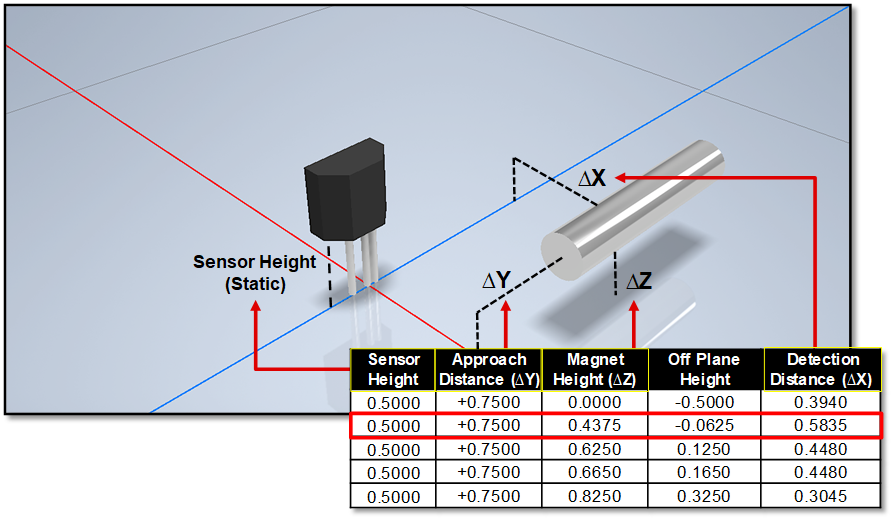SBAA510 October 2021 DRV5032 , TMAG5170 , TMAG5231 , TMAG5273
5.2 Understanding the Results
Because of the nodal testing, along with the observed detection distance on the variable axis for each specific node, a table format was used like the one shown in Figure 5-3. The sensor height remains constant throughout all testing while the change in the Y (or X in the case of the side approach) remains constant for 6 iterations of height (Z) values. The off-plane height is simply the magnets Z position minus the sensor height. Lastly, the X value in the last column is the observable detection point distance as measured during testing for each particular node.
 Figure 5-3 Understanding the Test Results
Figure 5-3 Understanding the Test Results